Reviving a vintage Transmission Electron Microscope - The Philips EM 420 (part 1).
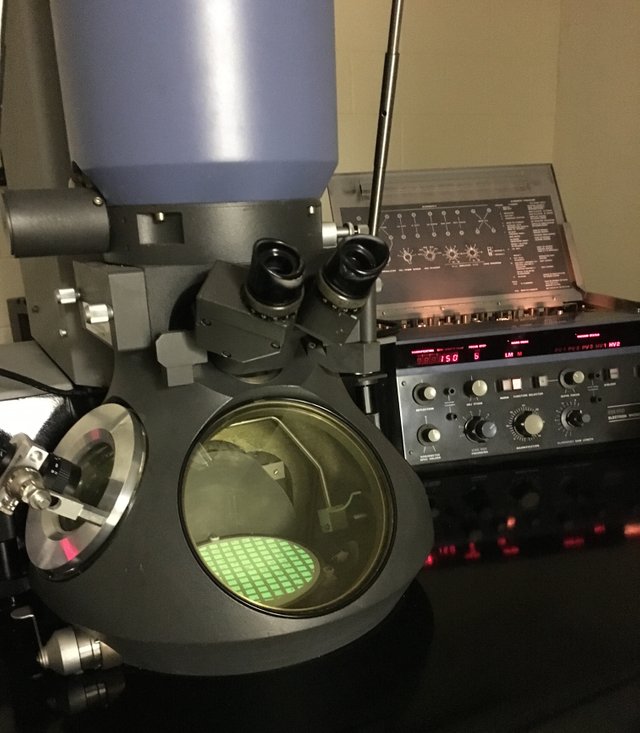
Figure 1. A fully functioning Philips EM410, I helped bring back to life a
few years back. It is a lot like the EM420, but made more for biological
applications.
I have been wanting to write some essays on Electron Microscopy for a while. So considering the amount of experience I have as a Transmission Electron Microscope (TEM) service engineer (13 years), I figured it would be fun to write about bringing a excellent scope back from the dead. The EM 420 came out sometime in or before 1983, according to an advertisement in the June 16 1983 edition of New Scientist (1). It can resolve down to 0.20nm (2 Angstrom), magnify up to around 800,000X, operates at 20 to 120 Kilovolts and is an excellent workhorse scope still economically viable and remains in use in some labs (2,3). So join me as I bring this guy back to life, and explain a few things about the science and engineering behind it on this journey, with LOTS of photos of its guts!!! It may take a while to bring it back, since it has been about a year since this thing was running. Also, I have service calls to attend to, and other projects on the side. When it is all dialed in running as it should, I will put a camera on it that we made and take some cool pics of some industry standard reference materials. If I can get my hands on the right sample prep equipment I will image other things.
But first…...
If you are new to Electron Microscopy, let me get you caught up on a few things. It is a massive field, with a long history, but I am going to be pretty brief.
First of all...Why?
Electron microscopes enable us to see details extremely smaller than with light microscopes. For example, the maximum magnification achieved with light is around 2000X, whereas with many commercially available Electron Microscopes magnifications of over 500,000x can be achieved. Okay...so what can we see with that? Well for example, viruses, bacteria, fine details of pollen, functional motifs of macromolecules like proteins which are nano scale machines and structures and all the way down to atoms! More important than magnification, is vastly improved resolving power, or in other words the ability to distinguish two different objects.
For comparison:
The unaided human eye can see separations of 0.1 mm, but with a good light microscope 100 nm can be distinguished (4). With the most powerful commercially available electron microscopes features as close as 55 picometers (0.055 nm) apart can be observed (5).
Now a little history
The first Electron Microscope was created by physicist Ernst Ruska in 1931 with his electrical engineer mentor, Max Knoll . That scope could resolve details down to 10 nm, and then sometime in the 40s resolution was increased to 2 nm (6) . These scopes were all Transmission types where in short the electron beam is focused through the specimen, and the resulting image focused onto a phosphor screen that converts the electron information into visual light information, an image. The first scanning electron microscope was constructed by Manfred von Ardenne in 1938, and patented in 1944 by RCA (7, 8). Scanning types collect information from the electrons bouncing off the surface of the sample, and convert it into an image. There were several other people involved in the development of electron microscopes in the early days and I will discuss what they did further on.
How these magnificent instruments work I will explain in upcoming posts. Right now tho I want get started on getting this guy back up and running! But before I continue, I want state that these things are no joke to install or repair. ALL TEMs are top heavy, and weigh near a ton, or several. They draw a lot of current and can be dangerous to work on. You better have a solid understanding of electricity, and a great mechanical aptitude, before you even think of doing this. Last, but not least, I take no responsibility for whatever happens if should someone injure themselves after reading my blog!
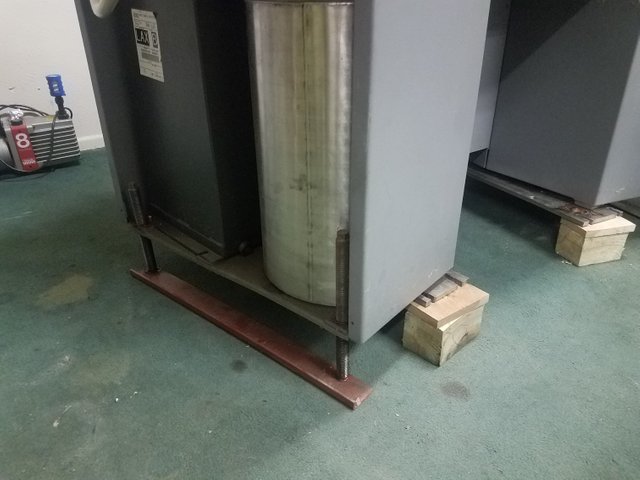
Figure 2. Preparing to lower the scope down onto its feet.
The smaller TEMs like this one are usually transported by pallet jack into the room they will remain. This guy has his own screw jack system. I slowly lower each side by about 1/4" at a time until it rests on the floor. The next step will be connectiong the power unit in the back.
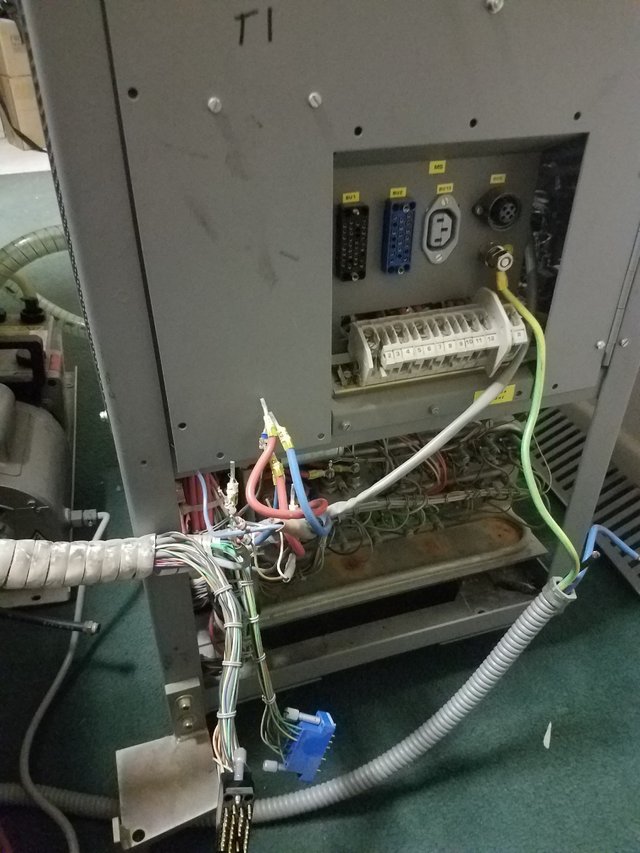
*Figure 3. Power Unit and connections.
Pretty straight forward this part. Once all electrical connections are made I usually proceed to connecting water lines, but I am going to bypass that for the moment because I want to see if it powers up. After that I will disconnect it from the 220V 40 Amp service it has and connect the water lines, and check for leaks.
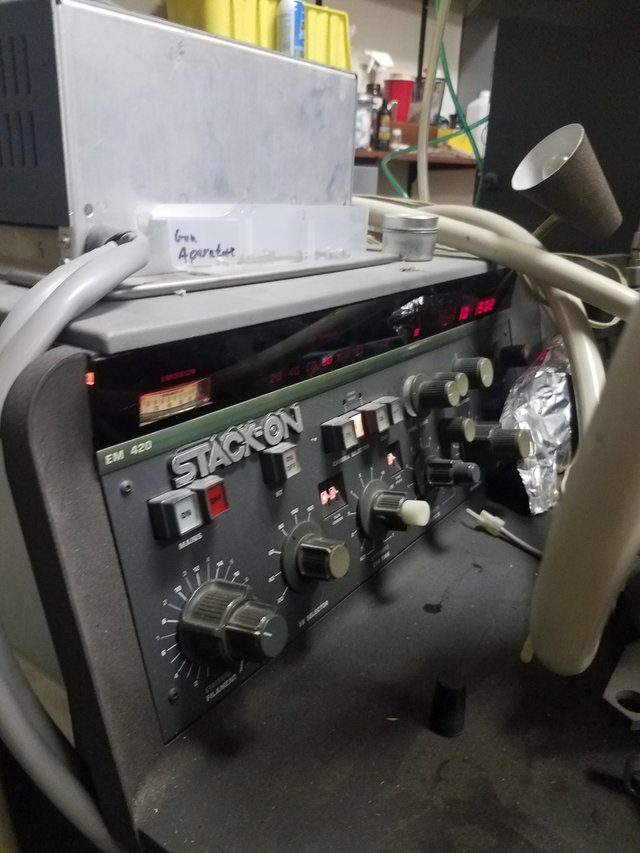
Figure 4. Powered up!
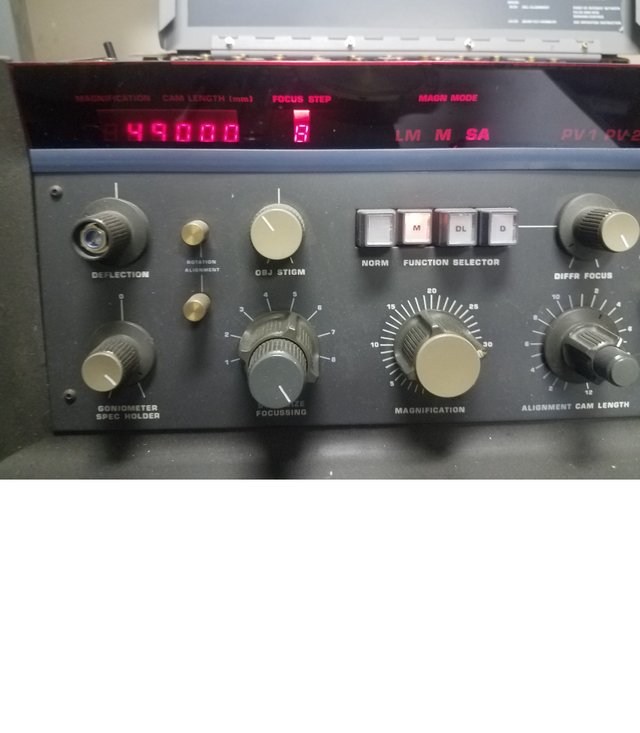
Figure 5. Close up of mag display, this goes up to 800,000X!
.jpg)
Figure 6. The whole deal.
Not a bad start at all, most of the panel lights are on, and the digital readouts function. The roughing pump even turns on! More on the vacuum system later. So I am going to turn the guy off for now, and get back to it later next week. I have a LOT left to do, including remount the gun chamber,but first I am going to clean it up real nice!
P.S. If anyone knows of a Dimpler or Jet Electropolisher that are being junked, please let me know. I would like to do some metallurgical analysis with this scope.
Til' next time!
*Edit: For some reason I cannot renumber my last 2 references. Sorry! Should be 7 and 8.
References:
New Scientist June 16th 1983 Page 769
Pre-installation and installation instructions for EM420, PW6007 – Philips Electron Optics Eindhoven, Netherlands (sometime in the early 80s)
Zworkyn, V.K. (1945). Electron Optics and the Electron Microscope. New York: John Wiley & Sons Inc.
https://www.jeolusa.com/PRODUCTS/Transmission-Electron-Microscopes-TEM/300-kV/JEM-ARM300F
Key events in History of Electron Microscopy. F Hagenau, 1 P.W. Hawkes, Microscopy and Microanalysis #9 2003
US Patent #2,348,030 - Scanning Type Electron Microscope
This post has been voted on by the SteemSTEM curation team and voting trail in collaboration with @utopian-io and @curie.
If you appreciate the work we are doing then consider voting all three projects for witness by selecting stem.witness, utopian-io and curie!
For additional information please join us on the SteemSTEM discord and to get to know the rest of the community!
Fun post...I learned EM on a similar model, 1970's vintage...that brings back memories! Overnight stay overs in the lab to meet a deadline, darkroom development, ahh those were the days.
I, too, have been wanting to write a post about an instrument I knew and loved. It was a Beckman Model E analytical ultracentrifuge, serial number 13 made in 1963 working perfectly in the 1980's!
It allowed the operator to observe the samples and take photographs during centrifugation.
https://digital.sciencehistory.org/works/wm117p37c
Watson and Crick used that one! Cool! Thanks for sharing!
This is something cool. Following you. waiting for more of your adventures!
Thank you sir. Computational Biology eh? i am think about getting into that, fairly seriously. Pretty tired of fixing peoples lab equipment. I actually have the ability to make a lot of stuff scientists use, but not real interested in making a business out of it. I do need to improve my embedded systems programming skills tho. Anyhow, in your professional opinion, would BsC in Biochem, along with years of experience combined with a Cert in Data Science get me a good job? Do not worry, I shall still post TEM repair stuff! Im hooked! Just need my lab. Hahahah
A certificate in data science will be very helpful in finding jobs. Especially in these ML/DL (machine learning/deep learning) days. But I cannot tell very exactly. Because I am a PhD student who if yet to finish my degree.
This is great. I once used TEM that looked to be about this old in the late 2000's . All those analog knobs and dials brings back memories. I was surprised at the time by how well it works. Sample prep was the real killer (it took a few days to fix samples for viewing for my experiments).
The improvements that have been made with TEM have been very gradual since the 80s. Computers made them easier to use, but did not necessarily help people understand them. This guy does not have a single processor anywhere, but works extremely well. Many claim it was the best scope Philips ever made. Oh yeah, sample prep is an artform. A while back a TEM lab manager told me the best analyst he ever had was an artist. Unfortunately, I have little sample prep experience, but I aim to change that. Glad you enjoyed the read. Working on my next post tonight!
This was a great post to read. Really! Glad to see you back!
I hope that in the next (to next to next) episode, we will be able to see pictures of the beast working and be used for some funny applications!
Thank you, and thank you again. Yes, this will all happen! I do need some sample prep equipment. Thought about making some of my own, but I would rather repair/upgrade/modify some that are being tossed!
Excellent!I am thus looking even more forward to the next post(s) :)
Wow, actually a blog?! Scientific blog?
Where have you been for a year, this is incredible!
Also, the scientific community on steemit became serious :
https://www.steemstem.io/ for "classical blogging"
https://www.stemq.io/ for "Q and A"
Thank you Sir, and duly noted!
Congratulations @roguescientist84! You have completed the following achievement on the Steem blockchain and have been rewarded with new badge(s) :
Click here to view your Board of Honor
If you no longer want to receive notifications, reply to this comment with the word
STOPTo listen to the audio version of this article click on the play image.

Brought to you by @tts. If you find it useful please consider upvoting this reply.
Hi @roguescientist84!
Your post was upvoted by Utopian.io in cooperation with @steemstem - supporting knowledge, innovation and technological advancement on the Steem Blockchain.
Contribute to Open Source with utopian.io
Learn how to contribute on our website and join the new open source economy.
Want to chat? Join the Utopian Community on Discord https://discord.gg/h52nFrV